This brief tutorial will show students and new users how to install inoERP on Ubuntu 16.04 and 18.04 LTS.
inoERP is an open-source, PHP-based, simple, and intuitive Enterprise Resource Management Platform (ERP) for businesses and individuals who want to manage their customers, invoices, orders, products, inventories, and more. It also includes human resources and accounting components to help manage the business employees and finances.
inoERP is one of the best open-source ERP / CRM management software to run your company. It is used by thousands of businesses worldwide to manage their CRM and ERP processes. It contains all the functionalities required for running any manufacturing, service, or distribution organization.
inoERP is an excellent place to start when looking for enterprise resource planning and customer relationship management solutions.
For more about inoERP, please check its homepage.
Install Nginx HTTP Server
inoERP requires a web server, and the Nginx HTTP server is the second most popular open-source web server available today. To install the Nginx server, run the commands below:
sudo apt update sudo apt install nginx
After installing Nginx, the commands below can be used to stop, start, and enable the Nginx service to always start up with the server boots.
sudo systemctl stop nginx.service sudo systemctl start nginx.service sudo systemctl enable nginx.service
Now that Nginx has been installed browse your browser to the URL below to test whether the web server works.
http://localhost

If you see the page above, then Nginx is successfully installed.
Install MariaDB Database Server
inoERP also requires a database server to store its content. MariaDB is a great place to start if you want a genuinely open-source database server. To install MariaDB, run the commands below:
sudo apt-get install mariadb-server mariadb-client
After installing MariaDB, the commands below can stop, start, and enable the service to start when the server boots.
Run these on Ubuntu 16.04 LTS
sudo systemctl stop mysql.service sudo systemctl start mysql.service sudo systemctl enable mysql.service
Run these on Ubuntu 18.10 and 18.04 LTS
sudo systemctl stop mariadb.service sudo systemctl start mariadb.service sudo systemctl enable mariadb.service
Next, run the commands below to secure the database server with a root password if you were not prompted to do so during the installation.
sudo mysql_secure_installation
When prompted, answer the questions below by following the guide.
- Enter current password for root (enter for none): Just press the Enter
- Set root password? [Y/n]: Y
- New password: Enter password
- Re-enter new password: Repeat password
- Remove anonymous users? [Y/n]: Y
- Disallow root login remotely? [Y/n]: Y
- Remove test database and access to it? [Y/n]: Y
- Reload privilege tables now? [Y/n]: Y
Once MariaDB is installed, run the commands below to test whether the database server was installed.
sudo mysql -u root -p
Type the root password when prompted.

The server was successfully installed if you see a similar screen.
Install PHP 7.2 and Related Modules
inoERP is a PHP-based CMS, and PHP is required. However, PHP 7.2 may not be available in Ubuntu’s default repositories. To run PHP 7.2 on Ubuntu 16.04 and previous, you may need to run the commands below:
sudo apt-get install software-properties-common sudo add-apt-repository ppa:ondrej/php
Then update and upgrade to PHP 7.2
sudo apt update
Next, run the commands below to install PHP 7.2 and related modules.
sudo apt install php7.2-fpm php7.2-common php7.2-mysql php7.2-gmp php7.2-curl php7.2-intl php7.2-mbstring php7.2-xmlrpc php7.2-gd php7.2-bcmath php7.2-xml php7.2-cli php7.2-zip
After installing PHP 7.2, run the commands below to open Nginx’s PHP default configuration file.
sudo nano /etc/php/7.2/fpm/php.ini
The lines below are a good setting for most PHP-based CMS. Update the configuration file with these and save.
file_uploads = On allow_url_fopen = On short_open_tag = On memory_limit = 256M cgi.fix_pathinfo = 0 upload_max_filesize = 100M max_execution_time = 360 date.timezone = America/Chicago
Restarting the Nginx web server whenever you change the PHP configuration file would be best. To do so, run the commands below:
sudo systemctl restart nginx.service
Once PHP is installed, create a test file called phpinfo.php in the Nginx default root directory. ( /var/www/html/)
sudo nano /var/www/html/phpinfo.php
Then, type the content below and save the file.
<?php phpinfo( ); ?>
Next, open your browser and browse to the server’s hostname or IP address, followed by phpinfo.php
http://localhost/phpinfo.php
You should see the PHP default test page.
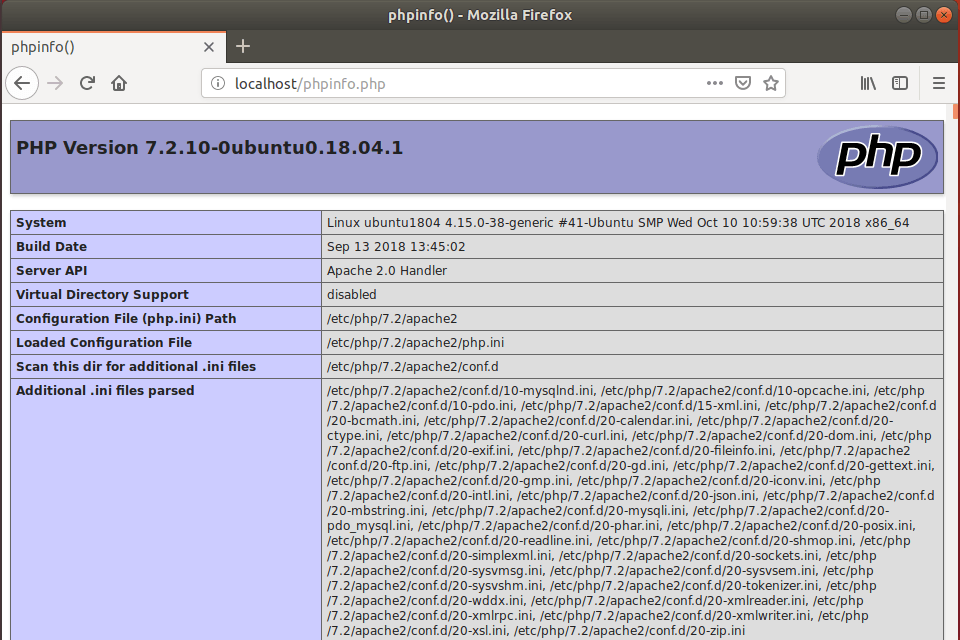
Create inoERP Database
Now that you’ve installed all the packages required for inoERP to function continue below to start configuring the servers. First, run the commands below to create a blank inoERP database.
To log on to the MariaDB database server, run the commands below.
sudo mysql -u root -p
Then, create a database called inoerp
CREATE DATABASE inoerp;
Create a database user called inoerpuser with a new password
CREATE USER 'inoerpuser'@'localhost' IDENTIFIED BY 'new_password_here';
Then, grant the user full access to the database.
GRANT ALL ON inoerp.* TO 'inoerpuser'@'localhost' IDENTIFIED BY 'user_password_here' WITH GRANT OPTION;
Finally, save your changes and exit.
FLUSH PRIVILEGES; EXIT;
Download inoERP Latest Release
To get the latest release of inoERP, you may want to use the GitHub repository. But first, install the git tool to download inoERP packages.
sudo apt install git
After installing curl and Composer above, change into the Nginx root directory and download inoERP packages from Github.
cd /var/www/html sudo git clone https://github.com/inoerp/inoERP.git
Then, run the commands below to set the correct permissions for the inoERP root directory and give Nginx control.
sudo chown -R www-data:www-data /var/www/html/inoERP/ sudo chmod -R 755 /var/www/html/inoERP/
Configure Nginx
Finally, configure the Apahce2 site configuration file for inoERP. This file will control how users access WebsiteBaker content. Run the commands below to create a new configuration file called inoERP
sudo nano /etc/nginx/sites-available/inoERP
Then copy and paste the content below into the file and save it. Replace the highlighted line with your domain name and directory root location.
server {
listen 80;
listen [::]:80;
root /var/www/html/inoERP/inoerp/www;
index index.php index.html index.htm;
server_name example.com www.example.com;
client_max_body_size 100M;
location / {
try_files $uri $uri/ /index.php?$query_string;
}
location ~ \.php$ {
include snippets/fastcgi-php.conf;
fastcgi_pass unix:/var/run/php/php7.2-fpm.sock;
fastcgi_param SCRIPT_FILENAME $document_root$fastcgi_script_name;
include fastcgi_params;
}
}
Save the file and exit.
Enable the inoERP and Rewrite Module.
After configuring the VirtualHost above, please enable it by running the commands below.
sudo ln -s /etc/nginx/sites-available/inoERP /etc/nginx/sites-enabled/ sudo systemctl restart nginx.service
Then open your browser and browse to the server domain name. You should see the inoERP setup wizard complete. Please follow the wizard carefully.
http://example.com/install.php
Then, follow the on-screen instructions. Validate that all the PHP requirements are met. then continue
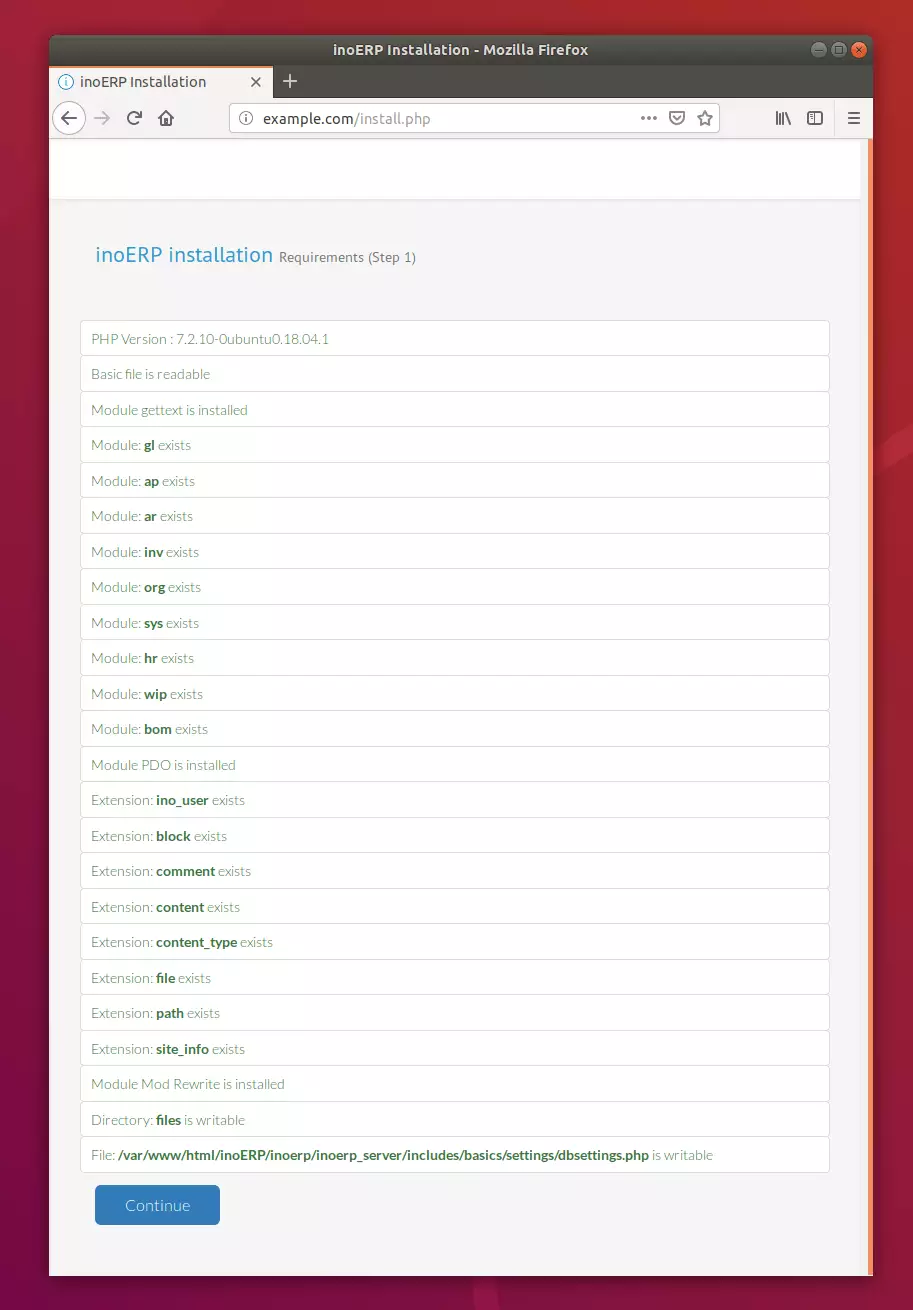
Next, type the database connection info you created above and continue.
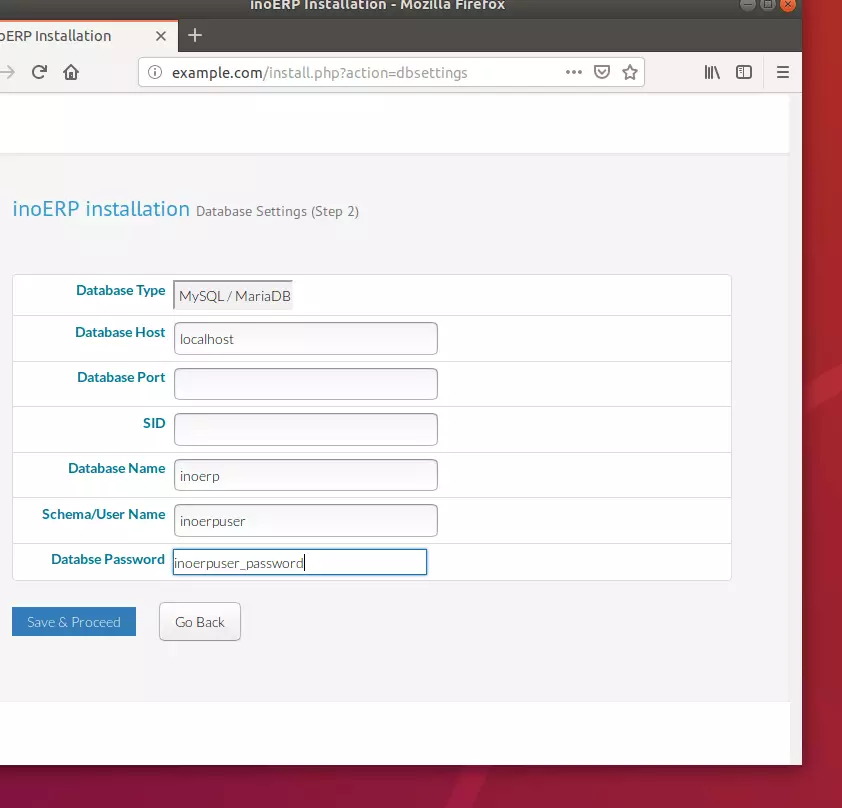
After that, select the system you want to install.
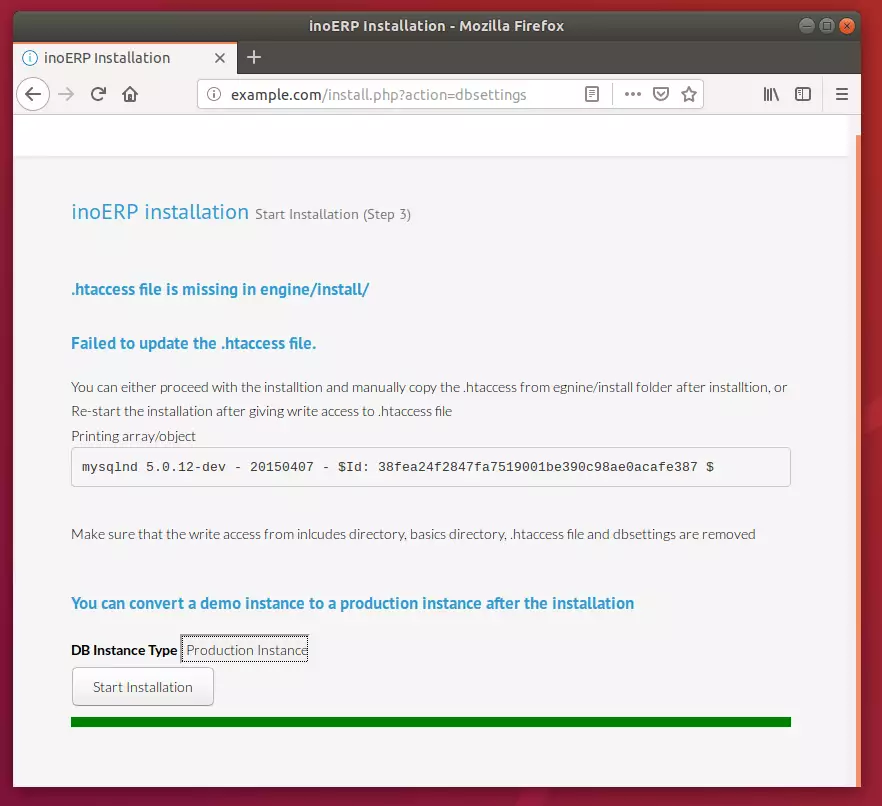
After a brief moment, inoERP should be installed and ready to use.
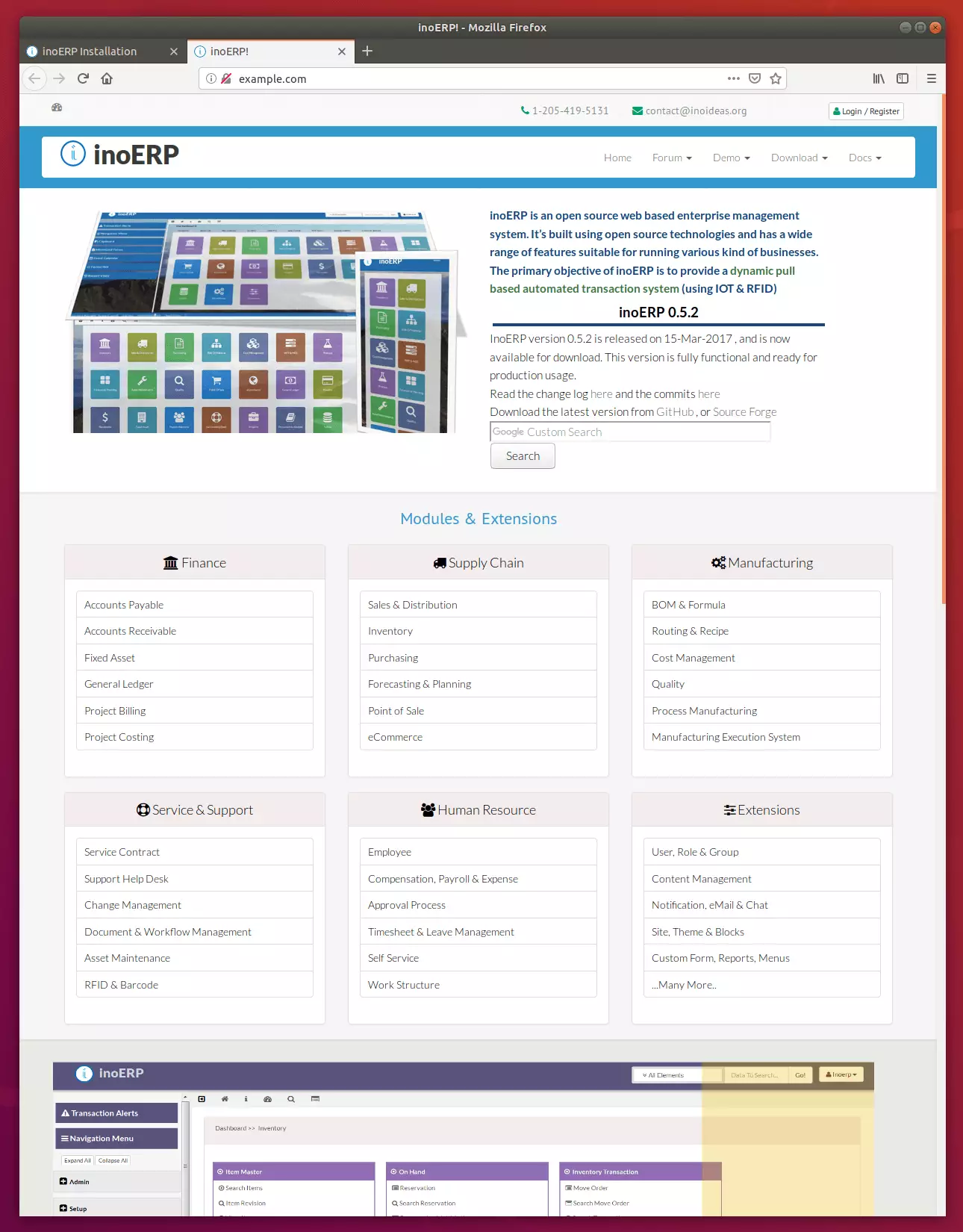
Login to the backend using the username and password below:
Username: inoerp
Password: inoerp

Enjoy~
Congratulation! You have successfully installed inoERP on Ubuntu 16.04 | 18.04 and 18.10.
You may also like the post below:

Leave a Reply to David Cancel reply